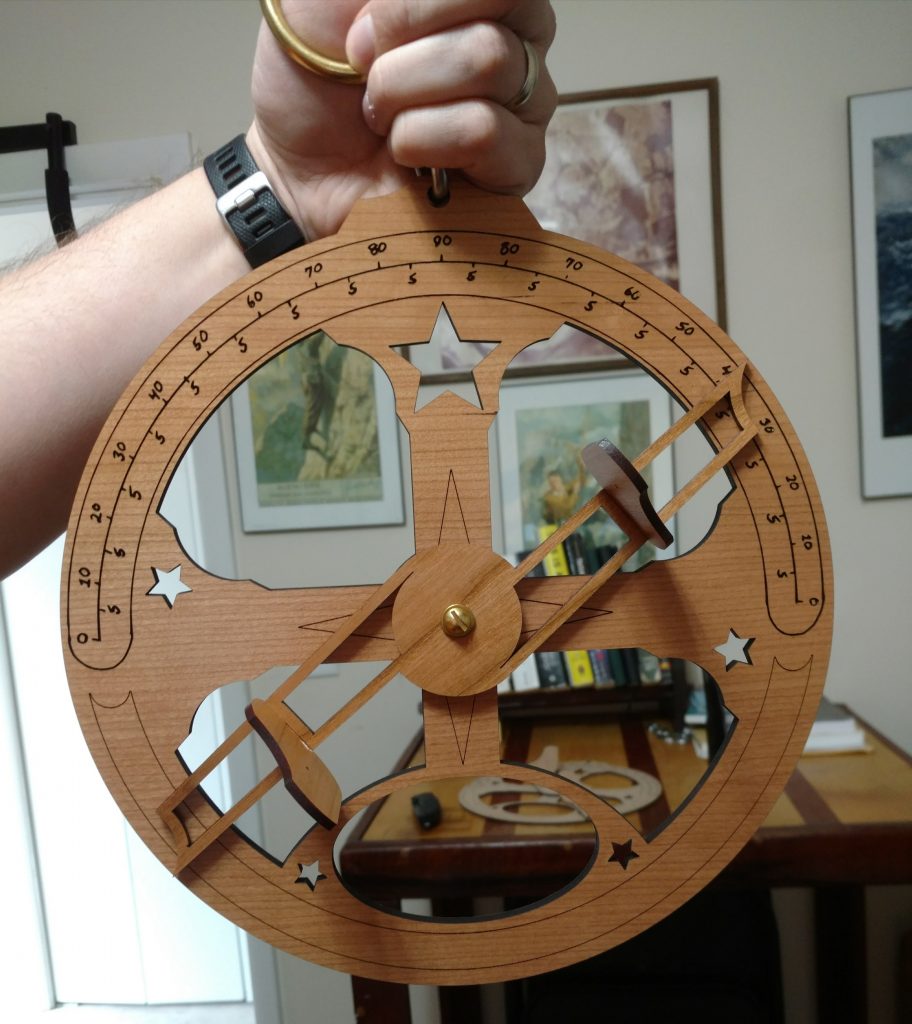
I have a bit of a soft spot for classic navigational instruments. In an age where more people interact with maps than ever before and yet spend much less time plotting their own course, being able to look up at the sky and discern your place in the world is a powerful skill. Unfortunately, it’s not exactly easy to make your own navigational instruments. Unless, of course, you have your own laser cutter.
I recently got a Glowforge, so honestly, you should have seen this coming.
Say hello to the Mariner’s Astrolabe!
Developed in the Middle East to help traders chart their course through the desert, the astrolabe was the most popular western navigational instrument for centuries. Unlike more primitive tools like the kamal and latitude hook, astrolabes work whether or not you can see the horizon. The astrolabe allowed navigators to track their latitude as they explored the world. Mariner’s Astrolabes were small, heavy, and designed to reduce windage. It took 3 people to take a proper sight. It was often more wrong than right. Notoriously difficult and inaccurate, Columbus reportedly hurled his overboard in the Sargasso Sea before making landfall half-a-world off course.
To use, sight Polaris through the pinholes in the alidade while holding the instrument level with the horizon and read the angle to calculate latitude. Astrolabes can also be use for dead reckoning by holding the instrument horizontally, aligning the top to North, and taking a bearing off you target.
Astolabes are a great tool for introducing students to celestial navigation and teaching trigonometry.
For inspiration and instruction, I use the following books: Latitude Hooks and Azimuth Rings: How to Build and Use 18 Traditional Navigational Tools (from which this design draws heavily), The Lo-Tech Navigator, and Emergency Navigation: Improvised and No-Instrument Methods for the Prudent Mariner.
Over the next year, I’m working on unveiling a series of classic and easy to reproduce navigational tool, from astrolabes to octants, that can be made on a laser cutter (or, I guess you could 3D print them, if you want).
If you enjoy Southern Fried Science, consider contributing to our Patreon campaign. For just $5 per month, you can support the SFS Writers Fund, which helps compensate your favorite ocean science and conservation bloggers for their efforts.